This might seem a bit of a departure from the usual stuff that I write about here, but stay with me and hopefully you’ll see the connections. It’s also the first thing I’ve written towards one of my long term projects, Everyday Horrors. This aims to bring together two popular genres of book which not many people have previously thought to combine: spooky story collection and self-help guide.
First I need to come out. Coming out is something I’ve done perhaps more than most people do in one lifetime. However this time it’s a bit different. After much reflection I need to let you know that I am a shape-shifter. Transmogrifier, lycanthrope, trickster, chameleon: call it what you will. I have the mutant superpower of magically transforming to fit my surroundings.
In the rest of this post I’ll use my own example to illustrate how you might come to identify, explore, and embrace your own inner mutant superpower.
Which mutant super hero/villain are you?
There are two ways of figuring out your own inner super hero/villain nature. You can either start by exploring which characters particularly resonate with you, or you can start by examining your own life for clues. My own realisation involved a little of both.
Read it, watch it, draw it, write it, pin it
If you want to start with fiction then the trick is to delve into genres that appeal to you where characters have magical powers. The obvious examples are the DC and Marvel comic universes (and/or the movies and TV shows based on them), particular the mutant-packed world of the X-Men, or the many and various superheroes and supervillains in the Superman/Batman/Spiderman series. If that doesn’t work so well for you then the fairy tales and myths of various cultures are packed with different kinds of monsters and magical characters, as are fantasy fiction, horror fiction, and science fiction. Check out recent shows like Lost Girl, Penny Dreadful, Being Human, or Once Upon a Time, or long term staples like Lord of the Rings, Harry Potter, Star Trek, or Dr. Who. For me the Red Dwarf and Buffy the Vampire TV series, and the books of Terry Pratchett and Neil Gaiman, are rich sources of material.
While you’re reading, listening or watching, ask yourself which characters you’re particularly drawn to. Which do you find attractive? Which scare you? Which do you relate to? Which do you fantasise about or long to ship? Check out fanfic based on the shows, books or movies you like, or write your own. Doodle and sketch the characters that you’re drawn to. Use an app like pintrest to bring together pics and clips that appeal to you.
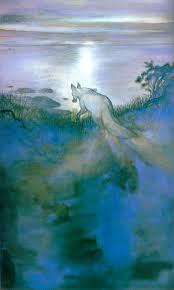 Dream Hunters fox fairy
Dream Hunters fox fairy
For me I started connecting the dots when I remembered how much I was drawn to the fox fairy story in Neil Gaiman’s book The Dream Hunters, and to so many other stories about foxes, to the extent that I’ve planned, for years, to get a tattoo of a fox. I found myself linking that to the werewolves in Penny Dreadful and Being Human (the characters I relate to most in those shows). I also remembered how Mystique in the X-men, and the T-1000 in Terminator 2, had always held a particular horror for me. And I thought about how attractive I found Tom Hiddleston’s Loki, and the episodes of Buffy where characters cast a spell which made everybody fall for them, particularly Superstar. Perhaps this could be seen as a kind of simultaneous shapeshifting like the Camille episode of Red Dwarf where the pleasure GELF appears to each person as their object of desire.
Your actual life
The other starting point for exploration is your life. Think back to growing up: What survival strategies did you develop to get through the tough things you experienced? Were these visible or invisible to those around you (or a bit of both)? What patterns have you noticed in more recent years in the way you engage with the world or relate to other people? What makes life worth living for you? What is your worst fear? What would you like to have written in your obituary? Are there any superpower/mutant metaphors that fit these themes particularly well? Talk to friends. What do they notice about you? Which characters do they think you’re most or least like? What superpowers would they say that you have?
Or you might delve into your dreams. Do you have any recurring ones? Are there common themes in the abilities that you have, such as flying or having great strength? What are your nightmares, for example do you dream of falling or being stuck in slow motion? What do you fantasise and daydream about?
 Chameleon changing colour
Chameleon changing colour
For me, I remember a moment when a partner said that I was a chameleon. Thinking back to childhood I recollect how isolated and alienated I felt when I changed school: how I didn’t fit in with any of the cliques and crowds there, just as it never made sense for me that we lined up separately as ‘girls’ and ‘boys’. At first I survived this by standing separately, but eventually the pressure was too great and I learnt – clumsily and painfully slowly – how to fit in. By my next school I was drifting from group to group and finding a capacity to fit with all of them. I also notice – on an everyday level – how easily I slip into different accents and ways of talking in conversation, depending on how the other person speaks. Certainly recurring nightmares involve going back to being rejected and on the outside.
Quiz time
If you want a quick way to explore these things you could just take a bunch of these handy online quizzes (there are lots with similar titles) and see what comes out:
- Which superhero are you?
- Which supervillain are you?
- Which mutant are you?
- What is your superpower?
Exploring your hero/villain sides
Once you’ve determined your mutant superpower/s, or the heroes and villains, demons and angels that you particularly identify with (there may well be more than one), you’re ready for a bit more exploration. The way I see it, every superpower has its strengths and limitations. The hero/villain binary is not necessarily a helpful one because – as more recent movies and TV shows have showed us – it’s rarely that simple. We can understand both the X-men who want to find a way to live alongside the humans, and the ones who want a complete revolution after years of oppression. We can empathise with the dark-knight version of Batman, or the common trope of the criminal psychologist and the serial killer as flip sides of the same coin.
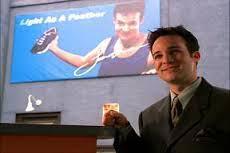 Superstar episode of Buffy
Superstar episode of Buffy
In my favorite episode of Buffy, which I mentioned before, Jonathan Levinson casts a spell which makes him into a superhero, adored by everyone. However, in order to create a version of himself that is only the positive, strong, heroic parts, the other parts have to go somewhere. A shadow version is also created: in this case in the form of a real monster. You might think also Ursula Le Guin’s Wizard of Earthsea, who summons – and has to eventually face – his own shadow. Or the Confidence and Paranoia, Dimension Jump, and Demons and Angels, episodes of Red Dwarf all of which imagine the best and worst aspects of the characters being made real.
So a useful point of exploration – to consider yourself and to talk about with other people in your life – is what the hero and villain sides of your superpower look like. You can’t have one without the other: the difficult parts are so interwoven with the great parts that they can’t be teased apart. It isn’t even always obvious which aspects are ‘good’ or ‘bad’. But it is definitely worth being aware of the possibilities and pitfalls of your powers. Here are some of the positive and negative shades of shape-shifting.
Superstar
Thinking about myself as a shape-shifter, the positives for me – and I think for those around me – lie in the capacity to flexibly and fluidly adapt to situations. I notice how I can feel ‘at home’ in many different places and communities. I can often get excited by multiple projects – even those that aren’t obviously interesting to me – throwing myself in and investing in them.
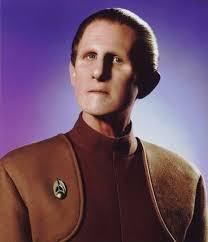 Odo: A shapeshifter who uses his powers for good
Odo: A shapeshifter who uses his powers for good
Also there is the capacity to empathise with different people. That is definitely helpful as a therapist. I find it relatively easy to pick up on how somebody is feeling, and to understand their way of seeing the world if they’re able to let me in. I also think that a strength in my writing is that capacity to hold multiple perspectives simultaneously or to see things from ‘both sides’. And I hope that I have something to offer to conflictual situations as I can often put myself in the shoes of two or more people involved. I often find it hard not to.
Monster
But shape-shifters in fiction are rarely positive characters. There are, therefore, many clues to the shadow side of shape-shifting abilities.
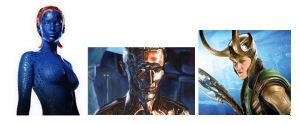 Mystique, T-1000, and Loki
Mystique, T-1000, and Loki
First if we think of Mystique, T-1000, and Loki, these are all manipulators who non-consensually trick people into believing that they are other than what they are, for their own personal gain or to further wider goals. There’s very little real empathy involved here other than the small amount it takes to know what other people expect – or want – to see. So the shadow side of the trickster is to be mistrusted and treated with suspicion, to be two-faced.
I don’t experience my shape-shifting nature as deliberate. It feels much more like the werewolf who has no choice but to change every full moon, or the chameleon who can’t help but adapt their color according to their surroundings.
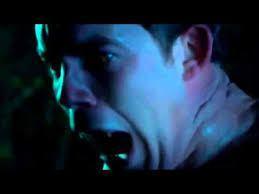 Werewolf in Being Human
Werewolf in Being Human
Different versions of myself feel drawn out of me by different people and situations, rather than me deciding – in any conscious way – that I want to be a certain way. However, like Mystique, T-1000 and Loki, there is often a wider goal behind it: that is the desire to be liked and approved of: to belong. And although I don’t deliberately transform my shape in order to achieve this, it can have the same effect as if I did. I know how it feels to have somebody look at you in disappointment or disgust as they see another side of you than the one they’d come to know and trust.
I mentioned the helpful side of shape-shifting as a capacity for empathy. One flip side of this is that it’s easy to get so drawn into another person’s way of being, or way of seeing the world, that I become somewhat lost myself. There’s a risk that I become very much what they want me to be, but that that is unsustainable and eventually I shift again. Perhaps helpful in the short-term, but harmful in the long-term.
What is your kryptonite? Who is your nemesis?
Of course all superheroes and villains have materials which remove their powers, which send them spiralling up to dangerous levels, or which flip them into their shadow side completely. They have nemeses who wield such weapons and who wish to destroy them. This is another thing worth exploring and remaining aware of.
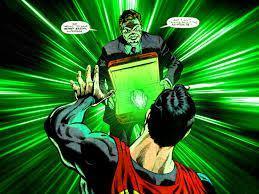 Kryptonite
Kryptonite
As a shape-shifter there are many dangers. You can become stuck in one particular self, which eventually becomes brittle and may break under the pressure of trying to keep static what is, by its nature, fluid. And, in a world that it very invested in authentic, individuals who can ‘find themselves’ or be ‘true to themselves’, it can be scary to recognize that there is maybe no real, underlying self. It can also be easy to slip into wondering whether maybe there is a ‘real self’ and that it is something ‘bad’: This is exacerbated, for me, if I know that people have stories of me which fix me in a particular way and which I have no control over.
Shape-shifters can also struggle with situations in which they’re called upon to be multiple sides of themselves simultaneously, or in quick succession. I can feel exhausted and confused at the end of a day when I’ve been with many different people – or groups of people – all coming from such different perspectives, positions, or levels of awareness. The other day I felt overwhelemed in a situation where three people were seeing things in very different ways and I found myself flicking faster and faster between each of them. I have an image – I’m not sure whether it’s from an actual film or TV show – of a shape-shifter trying desperately to morph into one thing after another, faster and faster, in order to find the ‘right’ shape, and eventually exploding, imploding, or dissolving into nothingness.
So my kryptonite would be becoming stuck – particularly in a self that I didn’t like or respect, or being called upon to shift too much or too quickly.
Awareness of the danger of becoming stuck helps me to remember to cultivate different sides of myself, and the different relationships, places, and projects which bring them out. It’s important to me to have multiple close people in my life instead of becoming focused on one. It’s also important to move between different spaces (particularly country and city) and to take on different roles and study different areas (e.g. moving between time each week where I’m writer, activist, therapist, and academic).
Awareness of the danger of shifting too much helps me to take time alone, which enables me to find some kind of equilibrium and equanimity when I’ve been spinning too fast. It reminds me that I need grounding, and I cultivate places, practices, and relationships which help me to do that. And it helps me to see the importance of boundaries, to prevent me from getting too lost.
Of course I don’t always get this ‘right’ by any means, but I feel like with each deepening of understanding I get a bit more of a handle on it.
Letting it go and opening up
In Frozen, princess Elsa has the superpower of being able to freeze things. When this harms her little sister, Anna, her parents hide her away, wipe Anna’s memory, and keep Elsa’s powers secret until she can get them under control. After their parents die Elsa has to become queen. She emerges from her room but tries to hold back her powers in any way possible. However, she can’t repress them forever. Eventually they explode out when she’s in an emotional state. She’s exposed as monstrous and, fearing the harm that her powers might do, she retreats to a solitary ice palace. There, at least, she is able to ‘let it go’ and stop holding back this vital part of who she is.
Eventually, with Anna’s help, Elsa is able to return to the world. It seems to me that Elsa finally becomes able to channel her powers when she is open about all of who she is with others, as well as about her own vulnerabilities and fears, and the shadow side of the powers. She needs to be okay with herself and prepared to connect with others. Paradoxically the powers are most dangerous when she attempts to force control over them or hide herself.
Whether we’re a shape-shifter or an Elsa, a hulk or a dark knight, an invisible person or a firestarter, it’s important to embrace our inner hero/villain and to find ways of expressing it to others.
Many thanks to Helen Bowes-Catton who started this train of thought, to Erich and Ludi because I’d never have got here without 9 Worlds, and to Melissa for making me think more about Frozen. The cold never bothered me anyway.
